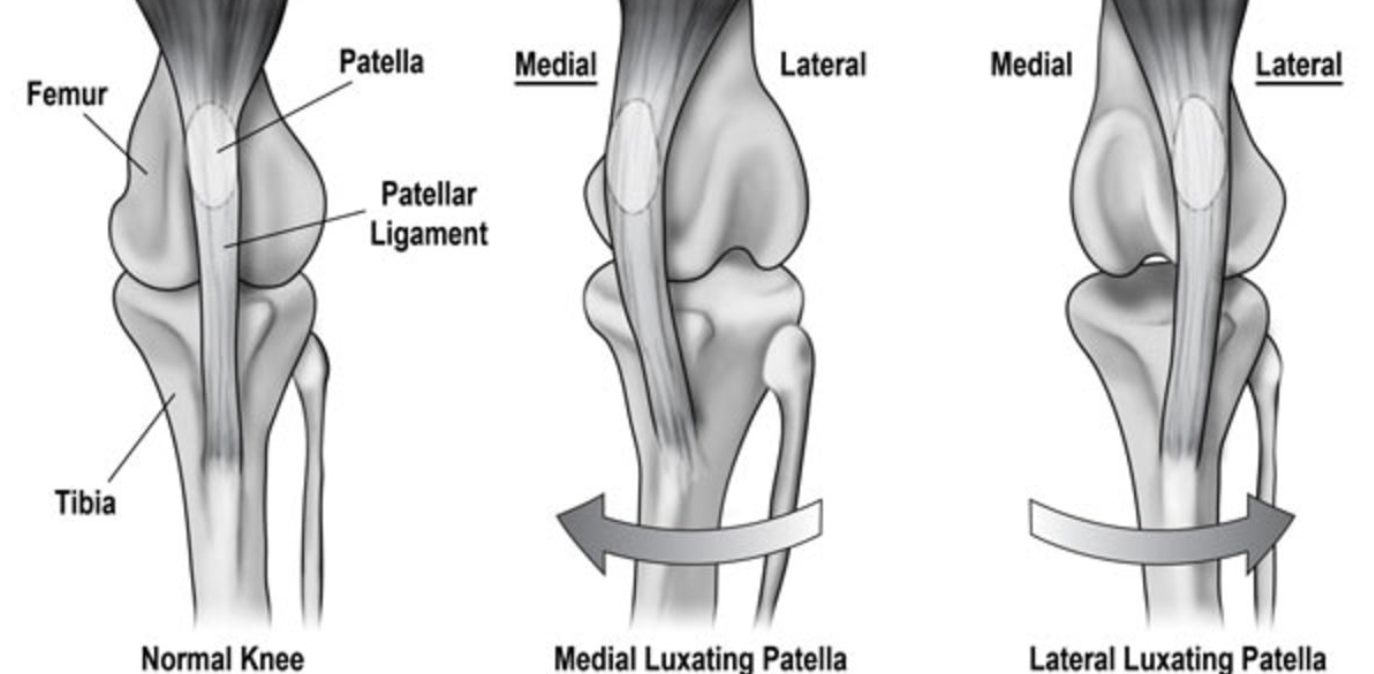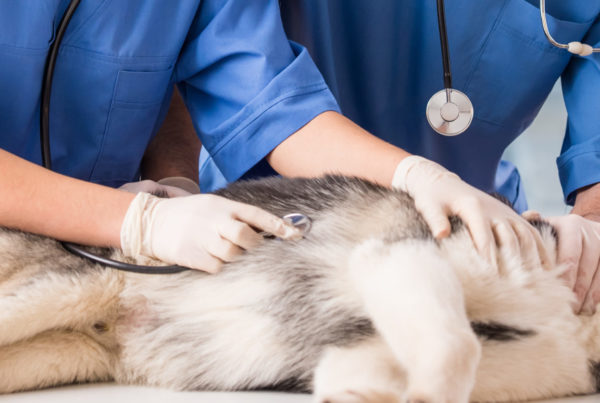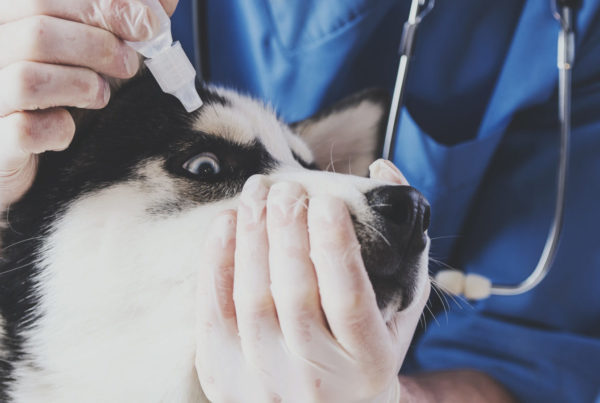WHAT IS PATELLAR LUXATION?
Patellar luxation, a hereditary disorder in dogs, is characterized by ectopic development of the patella medial or lateral to the trochlear groove of the femur. Patellar luxation can be associated with multiple deformities of the hindlimb, involving the hip joint, femur, and tibia. Medial patellar luxations can be involved with a reduced coxofemoral angle (coxa vara), lateral bowing of the femur, internal rotation of the tibia, shallow trochlear groove, and hypoplasia of the medial femoral condyle; lateral luxations cause the reverse changes.
Clinical signs are variable and based on the severity of luxation. Animals of any age may be affected. In general, small and miniature breeds of dogs have a medial luxation, and large dogs have a lateral luxation. Affected animals are lame or ambulate with a skipping gait. Palpation of the stifle joint reveals displacement of the patella.
In patellar luxation, the kneecap luxates, or pops out of place, either in a medial or lateral position… Animals can be affected by the time they are eight weeks of age.
PRELIMINARY EXAMINATION:
Evaluation of dogs under 12 months of age is encouraged if the owner desires to breed at this age. The most opportune time to gather breeding data is at 6-8 weeks of age prior to the puppy’s release to the new owner.
My note: since this exam is done in about 30 seconds and can be performed by ANY licensed veterinarian, breeders can easily have all of their puppies examined and, even more importantly, all of their breeding stock examined as young as 6-8 weeks, saving much time, emotional, and financial investment. There is a high degree of affected Pomeranians so it is essential to check ALL of our breeding stock for this common issue.
TIMING:
The Patellar Luxation Database is for dogs 12 months and over. Examinations performed on dogs less than 12 months will be treated as consultations and no OFA numbers will be assigned.
CERTIFICATION SPECIFICS:
An OFA number will be issued to all dogs found to be normal at 12 months of age or older. The OFA number will contain the age at evaluation and it is recommended that dogs be periodically reexamined as some luxations will not be evident until later in life.
All quotations taken from:
Merck Vet Manual
OFA Website: Patellar Luxation






